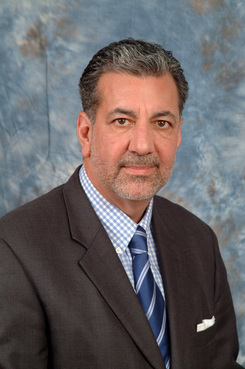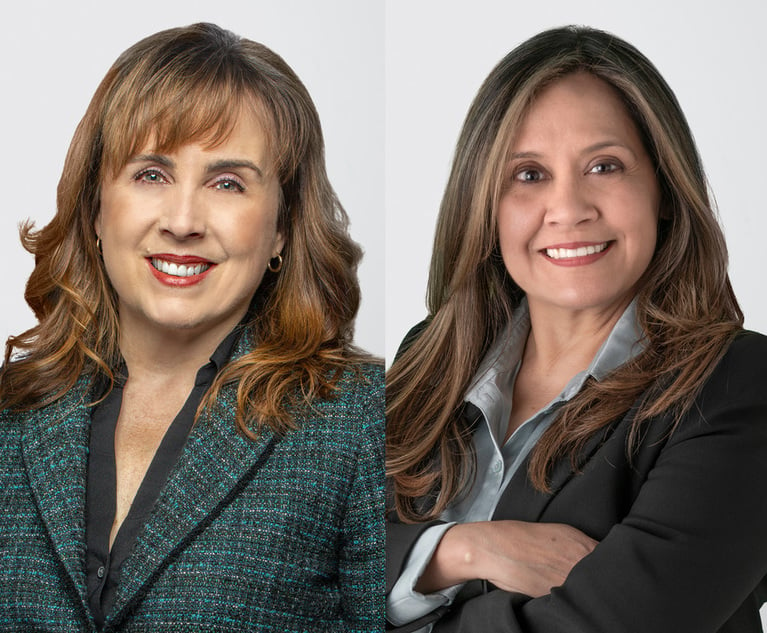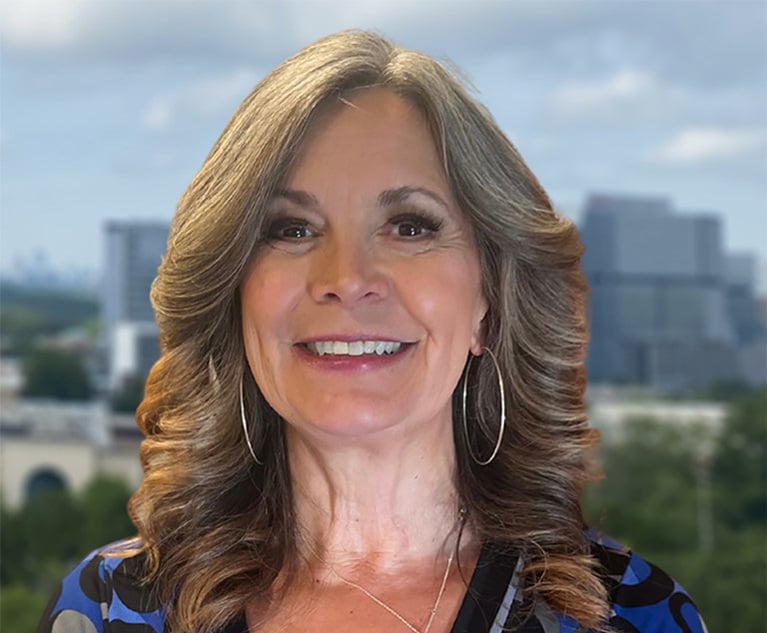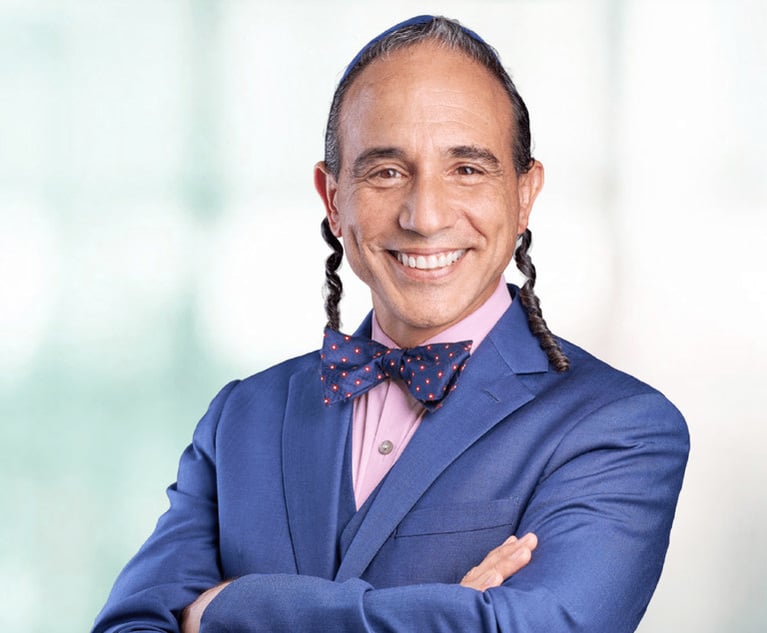Great Debate Over the 836 Isn't the Extension, It's What Comes After
The proposed 15-mile extension of State Road 836 into Kendall would take the highway past Miami-Dade County's urban development boundary.
October 29, 2018 at 09:12 AM
5 minute read
 John Fumero, Nason Yeager Gerson White & Lioce.
John Fumero, Nason Yeager Gerson White & Lioce.
The proposed 15-mile extension of State Road 836 into Kendall would take the highway past Miami-Dade County's urban development boundary. The main issue is more than the impact associated with the road itself, it is about the secondary effect of the highway project. And it is about how to manage the county's inevitable growth that will follow in a responsible and environmentally sustainable fashion.
Traffic congestion, a lack of affordable housing, protection of environmental resources such as water, and the agriculture industry frame the four corners of the major public policy debate over how best to address what would likely follow each interchange: development.
The highway project would cut through suburban neighborhoods, farms and environmentally sensitive areas such as wetlands and rural and agricultural areas. With the SR 836/Dolphin Expressway extension would come demand for homes and other types of development, and the services that their residents want.
Critics have attacked the proposed southwest extension as a way to create residential subdivisions closer to the Everglades. It has been widely reported that proponents view the expansion as much-needed relief from traffic congestion. They note that many Kendall residents along the proposed route now opt for accident-prone Krome Avenue as an alternative to the overcrowded Florida Turnpike.
These inherent realities underlie that debate: The county's population is reportedly expected to grow to over 3.1 million by 2040 from the current 2.7 million. By 2031, according to county plans, the housing supply within the urban development boundary is projected to be depleted, while the county's comprehensive plan requires that Miami-Dade should maintain a 15-year supply of residential land. Approximately, 52,000 acres of agricultural land are needed to maintain a viable agricultural industry. Only 57,000 acres remain outside the boundary.
Simply stated, something has to give. Is the 836 extension project the answer to Miami-Dade's commuter and housing woes? Or, are there other more manageable ways to solve these important challenges while protecting the environment and agriculture? Some commentators have suggested that redevelopment and other initiatives have not been fully explored.
To approve the SR 836/Dolphin Expressway extension, Miami-Dade government would need to substantially rewrite the current comprehensive plan and associated land development codes. Neither presently allows for major public infrastructure or development that would be facilitated by the highway project. Changing them isn't as simple as voting at the next commission meeting. These decisions have far-reaching implications for the future of the county, its residents, and a variety of sectors of the community.
Under state law, every local government is required to evaluate its comprehensive plan once every seven years to determine whether plan amendments are needed to reflect changes in the county's development blueprint. The SR 836/Dolphin Expressway extension would have direct implications for the plan update that began in 2017.
If the county determines that amendments to its comprehensive plan are needed, it must prepare and transmit them for state review. Thus, the state and other stakeholders will have a say in whether the comprehensive plan amendments become a reality.
With the county commission's recent vote, so will the federal government and the South Florida Water Management District because the project will likely require a National Environmental Policy Act analysis, and both state and federal permit approvals in order to move forward. Federal and state permit criteria require that the potential secondary impacts of the road spurring future development be addressed through wetland protection and mitigation.
In the past, Miami-Dade County relieved development constrictions by pushing the urban development boundary west and/or south. Even with urban expansion areas, the metro area has all but reached its physical limits. There is little land on which to respond to the ever-present demand for new residential and commercial areas.
Moving forward, county policymakers must grapple with ways to incentivize and expand redevelopment opportunities within the current boundary. There exist creative mechanisms to spur urban infill, develop alternative transportation modes, including integrated development plans at Metrorail stops, density waivers for residential projects that set aside units for affordable housing, and other initiatives.
Further, the SR 836/Dolphin Expressway extension, if pursued, can include design options and development restrictions to minimize or mitigate any potential adverse impacts to the environment. All this must be fully vetted before the highway project is finalized.
It will take more than satisfying government laws and regulations. Concerns of environmentalists, growth advocates, and other community stakeholders must be addressed. Piecemeal or reactive decision-making is longer an option.
The county commission will need to proactively develop and embrace a vision of Miami-Dade for the next 50 years, one that recognizes that stretching boundaries is a thing of the past, and balancing competing community priorities is necessary.
John J. Fumero is a shareholder at Nason Yeager, a full-service business law firm with offices in Palm Beach Gardens and Boca Raton. He practices in the areas of environmental, land use, land development, administrative, zoning, governmental and civil trial law.
This content has been archived. It is available through our partners, LexisNexis® and Bloomberg Law.
To view this content, please continue to their sites.
Not a Lexis Subscriber?
Subscribe Now
Not a Bloomberg Law Subscriber?
Subscribe Now
NOT FOR REPRINT
© 2025 ALM Global, LLC, All Rights Reserved. Request academic re-use from www.copyright.com. All other uses, submit a request to [email protected]. For more information visit Asset & Logo Licensing.
You Might Like
View All
Turning the Shock of a January Marital Split Into Effective Strategies for Your Well-Being
5 minute read

Trending Issues in Florida Construction Law That Attorneys Need to Be Aware Of
6 minute read
Trending Stories
- 1Uber Files RICO Suit Against Plaintiff-Side Firms Alleging Fraudulent Injury Claims
- 2The Law Firm Disrupted: Scrutinizing the Elephant More Than the Mouse
- 3Inherent Diminished Value Damages Unavailable to 3rd-Party Claimants, Court Says
- 4Pa. Defense Firm Sued by Client Over Ex-Eagles Player's $43.5M Med Mal Win
- 5Losses Mount at Morris Manning, but Departing Ex-Chair Stays Bullish About His Old Firm's Future
Who Got The Work
J. Brugh Lower of Gibbons has entered an appearance for industrial equipment supplier Devco Corporation in a pending trademark infringement lawsuit. The suit, accusing the defendant of selling knock-off Graco products, was filed Dec. 18 in New Jersey District Court by Rivkin Radler on behalf of Graco Inc. and Graco Minnesota. The case, assigned to U.S. District Judge Zahid N. Quraishi, is 3:24-cv-11294, Graco Inc. et al v. Devco Corporation.
Who Got The Work
Rebecca Maller-Stein and Kent A. Yalowitz of Arnold & Porter Kaye Scholer have entered their appearances for Hanaco Venture Capital and its executives, Lior Prosor and David Frankel, in a pending securities lawsuit. The action, filed on Dec. 24 in New York Southern District Court by Zell, Aron & Co. on behalf of Goldeneye Advisors, accuses the defendants of negligently and fraudulently managing the plaintiff's $1 million investment. The case, assigned to U.S. District Judge Vernon S. Broderick, is 1:24-cv-09918, Goldeneye Advisors, LLC v. Hanaco Venture Capital, Ltd. et al.
Who Got The Work
Attorneys from A&O Shearman has stepped in as defense counsel for Toronto-Dominion Bank and other defendants in a pending securities class action. The suit, filed Dec. 11 in New York Southern District Court by Bleichmar Fonti & Auld, accuses the defendants of concealing the bank's 'pervasive' deficiencies in regards to its compliance with the Bank Secrecy Act and the quality of its anti-money laundering controls. The case, assigned to U.S. District Judge Arun Subramanian, is 1:24-cv-09445, Gonzalez v. The Toronto-Dominion Bank et al.
Who Got The Work
Crown Castle International, a Pennsylvania company providing shared communications infrastructure, has turned to Luke D. Wolf of Gordon Rees Scully Mansukhani to fend off a pending breach-of-contract lawsuit. The court action, filed Nov. 25 in Michigan Eastern District Court by Hooper Hathaway PC on behalf of The Town Residences LLC, accuses Crown Castle of failing to transfer approximately $30,000 in utility payments from T-Mobile in breach of a roof-top lease and assignment agreement. The case, assigned to U.S. District Judge Susan K. Declercq, is 2:24-cv-13131, The Town Residences LLC v. T-Mobile US, Inc. et al.
Who Got The Work
Wilfred P. Coronato and Daniel M. Schwartz of McCarter & English have stepped in as defense counsel to Electrolux Home Products Inc. in a pending product liability lawsuit. The court action, filed Nov. 26 in New York Eastern District Court by Poulos Lopiccolo PC and Nagel Rice LLP on behalf of David Stern, alleges that the defendant's refrigerators’ drawers and shelving repeatedly break and fall apart within months after purchase. The case, assigned to U.S. District Judge Joan M. Azrack, is 2:24-cv-08204, Stern v. Electrolux Home Products, Inc.
Featured Firms
Law Offices of Gary Martin Hays & Associates, P.C.
(470) 294-1674
Law Offices of Mark E. Salomone
(857) 444-6468
Smith & Hassler
(713) 739-1250






